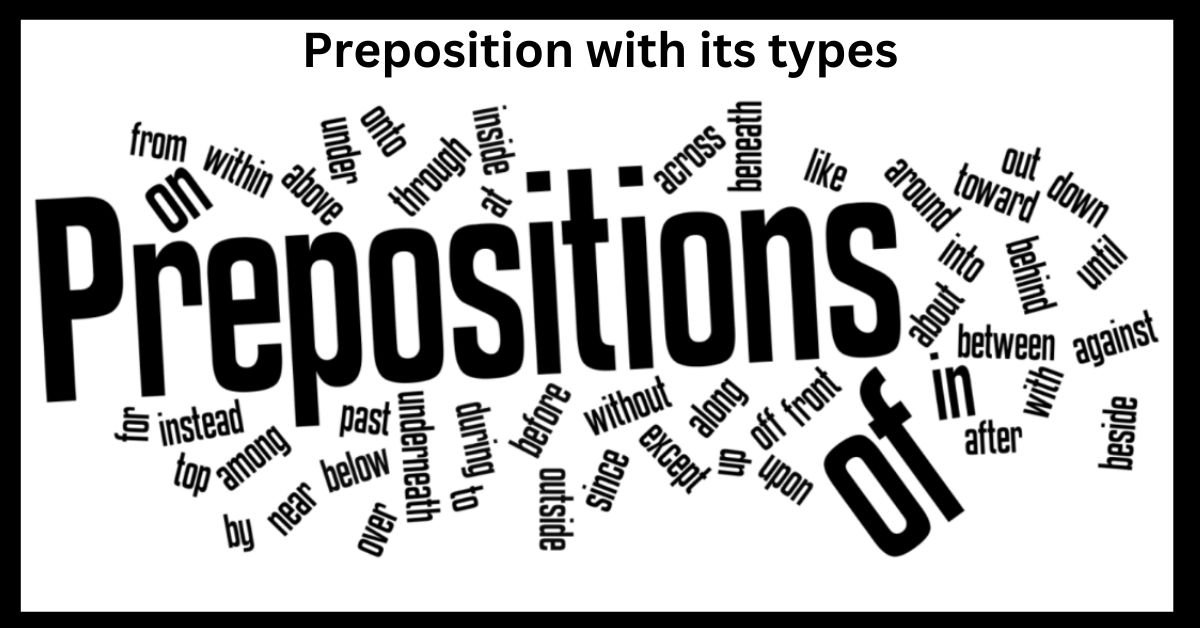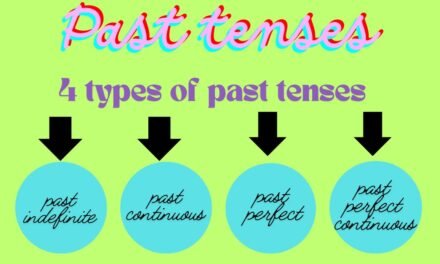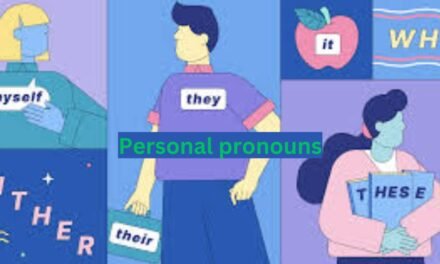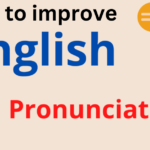Preposition with its types
Imagine a sentence as a train track. Nouns and pronouns are the train cars, carrying the essential information. But how do these cars connect and move smoothly? That’s where prepositions come in – the unsung heroes of grammar, acting as the tracks that guide the relationships between these elements.
This comprehensive guide dives deep into the world of grammar exploring their types, uses, and how they can elevate your writing from grammatically correct to clear, concise, and impactful.
What are Prepositions?
These are short words that establish a relationship between a noun, pronoun, or noun phrase and another word in the sentence. They act as connectors, showing direction, location, time, manner, or cause.
Here are some examples:
- The book is on the table. (On indicates location)
- She ran across the street. (Across indicates direction)
- We met during the holidays. (During indicates time)
- He acted with kindness. (With indicated manner)
Without prepositions, sentences would be clunky and nonsensical, lacking the flow and clarity that these tiny words provide.
Preposition with its types
It’s come in a variety of flavors, each serving a specific purpose:
Place
These indicate the physical or metaphorical location of something.
- Examples: at, in, on, above, below, behind, beside, between, beyond, near, under, within, throughout
Time
They specify when something happens or for how long.
- Examples: after, before, during, since, until, throughout, by, for, in
Direction
They indicate the movement or path of something
- Examples: across, along, around, down, from, into, off, onto, over, through, to, toward, up
Manner
They describe how something is done or happens.
- Examples: according to, along with, apart from, because of, by means of, despite, in spite of, with
Relationship
These connect nouns or pronouns to show possession, origin, or cause.
- Examples: about, above, against, among, beyond, concerning, of, regarding, respecting
Choosing the Right Preposition: Mastering Nuances
While the basic types provide a framework, mastering these involves understanding the subtle differences between them to achieve precise meaning. Here are some common usage dilemmas:
In vs. On
“In” generally refers to being enclosed within something, while “on” indicates a surface or position touching something.
- Example: The book is in the drawer. (Enclosed) The pen is on the desk. (Touching the surface)
At vs. In
“At” is often used for specific points in time or places, while “in” indicates a longer duration or indefinite location.
- Example: We meet at noon. (Specific time) She lives in France. (Indefinite location)
Between vs. Among
“Between” is used for two things, while “among” is used for three or more.
- Example: He stood between John and Mary. (Two people) She walked among the trees. (Three or more trees)
By vs. With
“By” often suggests means or cause, while “with” indicates accompaniment or possession.
- Example: I wrote the letter by hand. (Means) She walked with her dog. (Accompaniment)
These are just a few examples. Consulting a dictionary or thesaurus can help you choose the most appropriate preposition for specific situations.
Degrees of Prepositions (Not Applicable)
Prepositions themselves don’t have degrees like adjectives or adverbs. However, some can be used in prepositional phrases, which can function similarly to adverbs. For example, “She walked very slowly” uses the adverb “very” to modify the verb “walked.” In the sentence “She walked close to the edge,” “close to” is a prepositional phrase modifying the verb “walked.”
Tips and Tricks
Now that you’re familiar with the types and nuances of in, on , at, etc. let’s explore how to use them effectively in your writing:
Maintain Clarity
- Choose prepositions that accurately reflect the intended relationship between words. A slight change in it can alter the entire meaning of your sentence.
- Example: “Think about this problem” suggests pondering it, while “Think of this problem” implies coming up with a solution.
Consider Context
-
The best preposition depends on the surrounding words and the overall meaning you want to convey.
- Example: “Depend on” is used for reliance, while “dependent on” is an adjective phrase indicating something relies on something else.
Formal vs. Informal Writing
-
Certain prepositions are more common in formal or informal settings.
- Example: “Due to” is more formal than “because of.”
Idioms and Phrasal Verbs
-
Many idioms and phrasal verbs have specific prepositions that cannot be interchanged.
- Example: “Agree with someone” but “Disagree with someone.”
Practice Makes Perfect
The best way to master prepositions is through consistent practice. Here are some tips:
- Read extensively:
Pay attention to how authors use prepositions in their work.
- Do exercises:
Many online resources and grammar books offer exercises to test your understanding.
- Write regularly:
Consciously focus on choosing the right prepositions in your writing.
- Proofread meticulously:
Double-check your work for any prepositional errors.
Related Idioms
This plays a crucial role in idioms – expressions with figurative meanings that don’t always make literal sense. Understanding these prepositions used in idioms is essential for interpreting their meaning correctly.
Here are some examples:
- Head over heels: deeply in love
- Down in the dumps: feeling sad
- Fed up with tired of something
- Run into someone: meet someone unexpectedly
By understanding the prepositions in these idioms, you can not only interpret them accurately but also use them effectively in your own writing to add a touch of flair and informality.
Conclusion
In conclusion, these are unsung heroes of grammar, acting as tiny but crucial connectors that establish relationships between words and phrases in a sentence. By understanding the different types of prepositions – time, place, direction, manner, and more – you gain the power to construct clear, concise, and accurate sentences. Mastering prepositions is an essential step to achieving fluency and confident expression in English.










Thanks for making me to gain new ideas about desktops. I also hold the belief that one of the best ways to help keep your laptop computer in excellent condition is a hard plastic case, and also shell, that fits over the top of one’s computer. Most of these protective gear are model unique since they are made to fit perfectly above the natural outer shell. You can buy all of them directly from the owner, or through third party sources if they are available for your laptop computer, however not all laptop may have a spend on the market. Once again, thanks for your suggestions.
I like this post, enjoyed this one thanks for posting. “No trumpets sound when the important decisions of our life are made. Destiny is made known silently.” by Agnes de Mille.